Neurophysiology day 8
1/43
There's no tags or description
Looks like no tags are added yet.
Name | Mastery | Learn | Test | Matching | Spaced |
|---|
No study sessions yet.
44 Terms
protons
have a positive charge
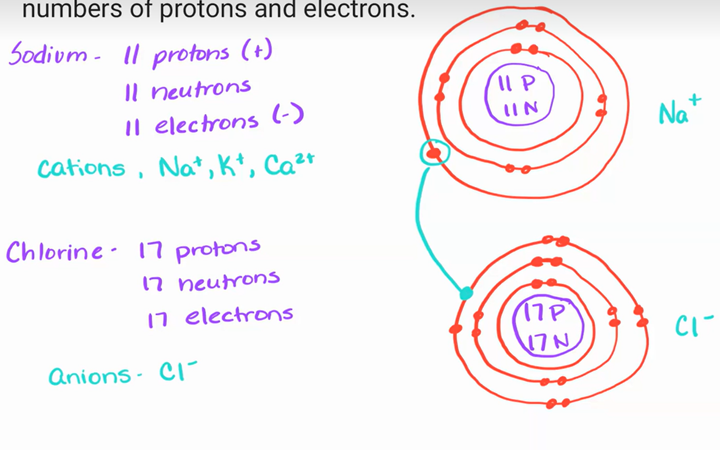
electrons
have a negative charge
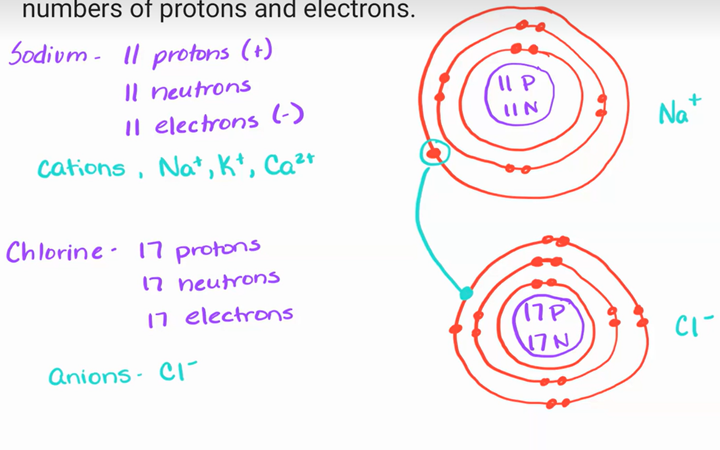
ions
have a net charge because of unequal number of protons and electrons
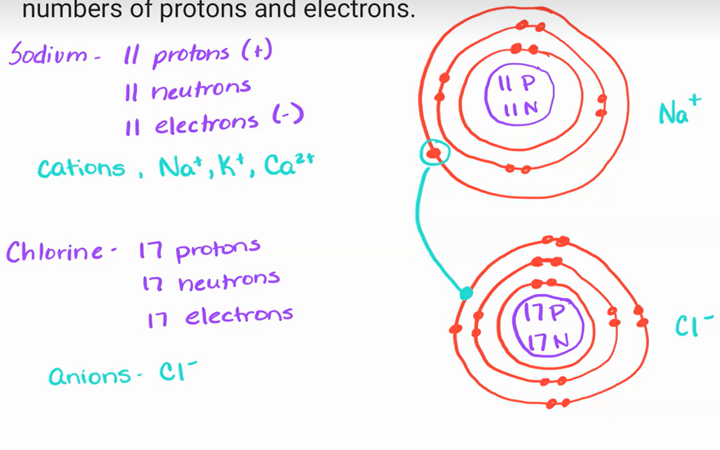
the movement or flow of charges make up an
electric current which is similar to the flow of water through pipes
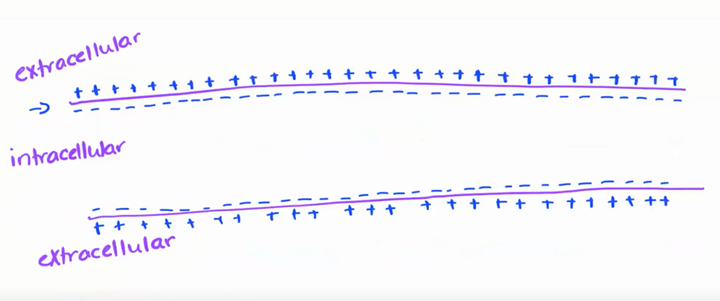
voltage or potential difference
when we separate positive and negative electrical charges
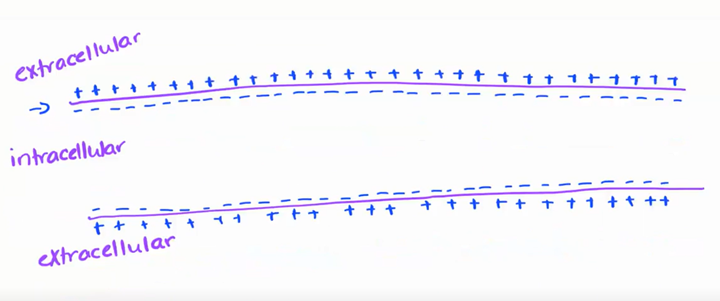
transmembrane potential
positive and negative charges are separated across cell membrane
because the inside is more negative than the outside we say the transmembrane potential of a resting neuron (resting membrane potential) is –70 mV
also means the neuron is not transmitting signals

ions are distributed
unequally
extracellular cation
Na+ and Cl-
Intracellular cation
K+
proteins are what charge
negatively charged
cell membranes are
semipermeable
What causes the ions to flow into or out of the cell if the membrane channels are open?
chemical gradients
chemical gradients
move from high to low concentration
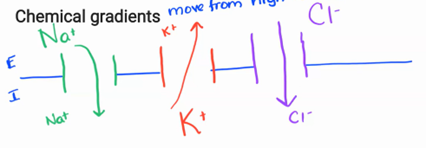
electrical gradient
opposites attract
movement based on charge
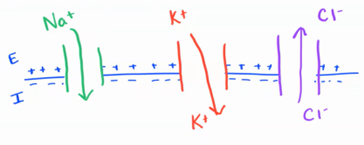
electrochemical gradient
when both chemical and electrical gradient are working at the same time

how do cells return to RMP after a change in membrane potential
Sodium-potassium (Na+ - K+) ATPase pump
Sodium-Potassium (Na+ - K+) ATPase pump
- Move against concentration gradient
- 3 Na+ out
- 2 K+ in
- Keeps it at -70 RMP
- Found alongside the entire neuron (dendrites + soma, axon, and terminals)
passive channels or leak channels
- Always open
- K+ leak channels
- Na+ leak channels
- Found on the dendrites, soma, axon, and terminals
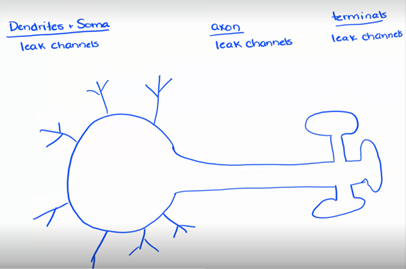
chemically regulated (gated)(ligand regulated) channels
- Open or closed in response to a specific chemical
- Found in the dendrites and soma
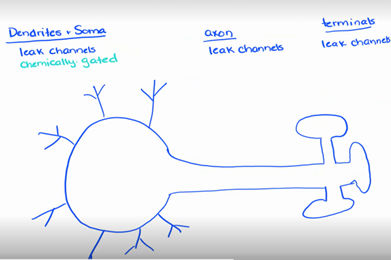
mechanically regulated channels
- Going to open or close in response to a membrane distortion – touch, pressure, vibration
- Found only in dendrites
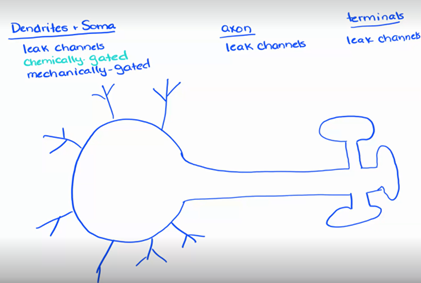
voltage regulated channels
- Open or close in response to a change in the transmembrane potential – change in voltage
- Found on the axon and terminals
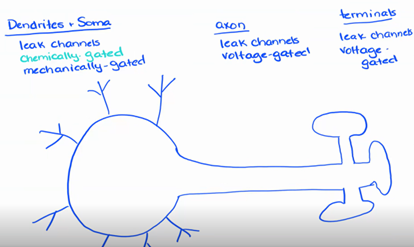
When a neuron is stimulated by a signal from another neuron…
a ligand binding to a chemical channel or a shape change in a mechanically regulated channel it causes small local disturbances in the membrane potential.
depolarization
- Overall goal: axon hillock to reach threshold (-60mV)
- Ways to reach the goal would be to open channels for a more stronger stimulus until it reaches the axon Hillock or open a channel more closer to the axon hillock
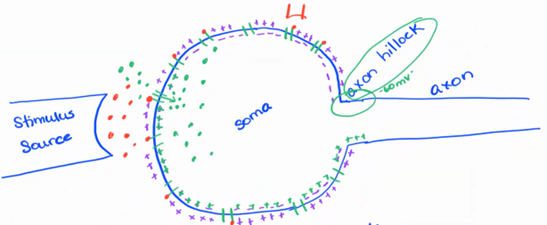
local potential - short distance
Incoming Na+ ions diffuse short distances from the initial site producing a current along the dendrite and cell body toward the axon hillock or trigger zone
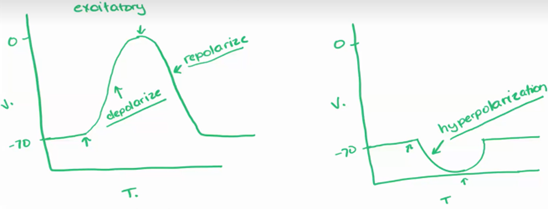
graded local potential
strength varies in magnitude dependent on stimulus – open more channels or keep them open longer

decremental local potential
signal weakens the further it travels
reversible local potential
remove the stimulus, you stop the signal and allows the neuron to go back into resting membrane potential
excitatory
Open Na+ channels
depolarization
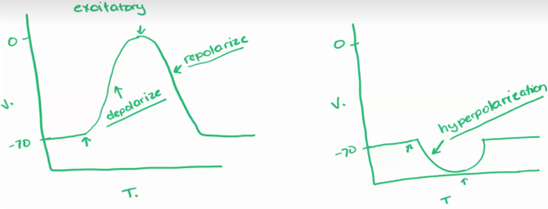
Inhibitatory
Open K+ channels
Hyperpolarization
repolarization
Na+-K+ ATPase pumps return cell to resting membrane potential
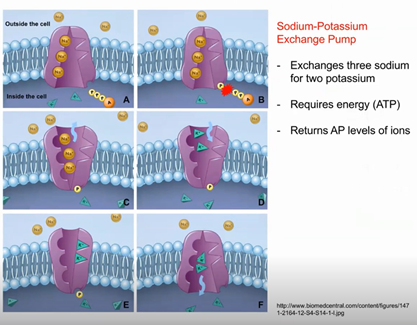
hyperpolarization
to make more negative
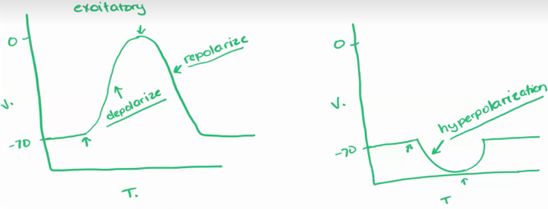
neurons can generate
an electrical signal or action potential
voltage-gated channels
ion channels that produce action potential
action potential
Local potential at axon hillock increases until it rises to threshold
Neuron produces an action potential; voltage-regulated Na+ channels open; more and more Na+ gates open as Na+ enters the cell; K+ gates open more slowly when threshold is reached (rapid depolarization)
When 0mV is reached/passed, Na+ gates are; voltage peaks at approx. +35mV (0mV in some, +50mV in others)
K+ gates now fully open; K+ leaves the cell repolarizing the membrane; causing shift back to negative inside and positive outside
K+ channels remain open a little longer than the Na+ channels and more K+ leaves than Na+ came in causing a 1 or 2 mV overshot or hyperpolarization
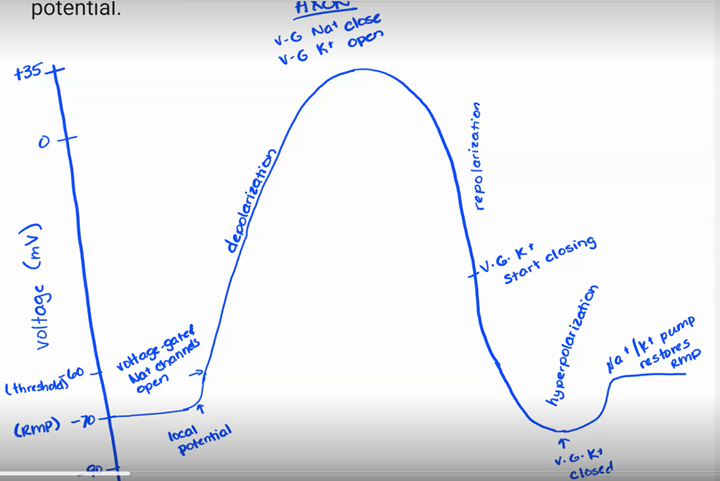
characteristics of action potential
all or none rule
no signal degradation
irreversible
all or none rule
if threshold reached, action potential will occur
no signal degradation
when action potentials are created along the length of the axon, those action potentials will remain the same strength all the way down
irreversible
once we start action potential, removing the signal will not stop the process
refractory period (impossible or difficult to make another action potential on a membrane segment)
During an action potential and a few msec after, it is difficult or impossible to stimulate to produce another action potential

absolute refractory period
- No matter what, we cannot generate another action potential
- Threshold to 35+ mV – all Na+ channels are open
- +35mV to -50mV the inactivation gate is closed and won’t reopen
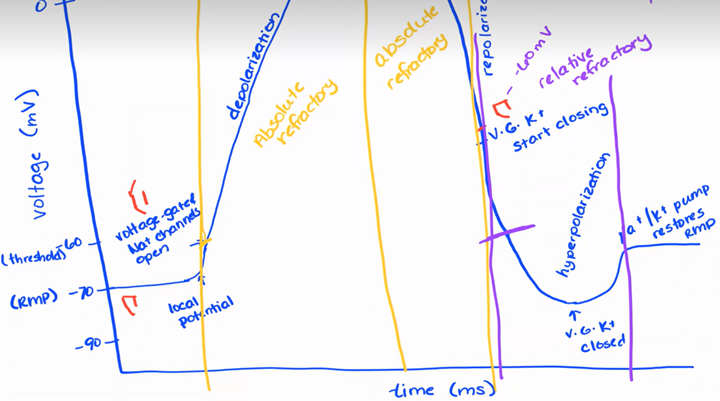
relative refractory period
Very strong stimulus may generate another action potential
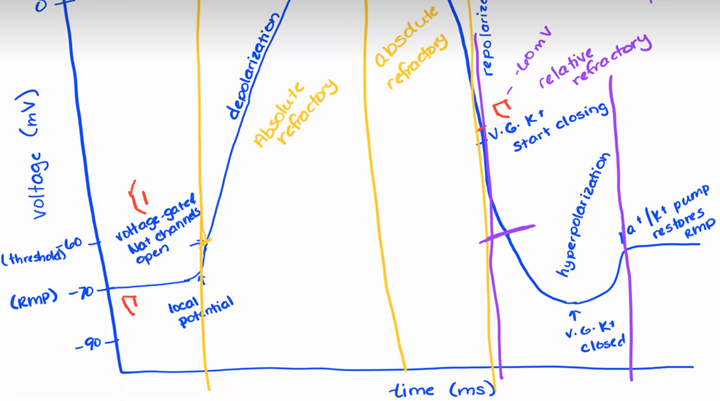
Unmyelinated fibers (continuous propagation)
will always go towards terminal and never towards soma because of absolute refractory
Myelinated fibers (saltatory propagation)
- Skipping parts of the membrane for depolarization
- Can only do at the nodes of Ranvier with Schwann cells
Axon diameter and propagation speed
- Myelinated = faster
- Larger diameter axon = faster